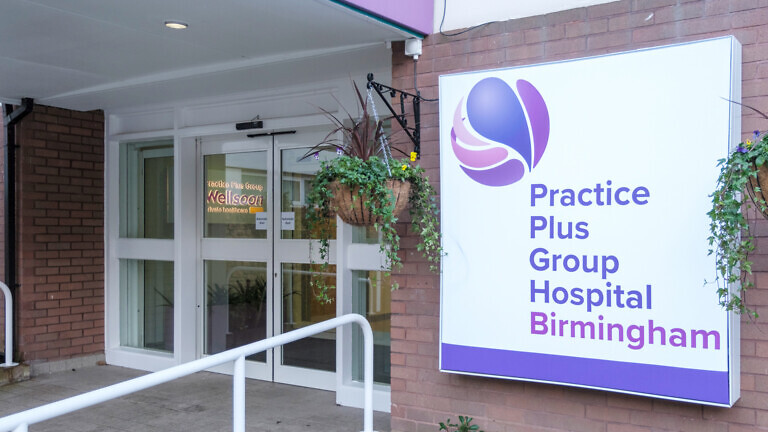In the second of a two-part interview, the chief executive of NHS Resolution explains the importance of faster resolution and transparency.
Helen Vernon has been chief executive of NHS Resolution since 2014. In the second of a two-part interview (read the first part here), she talks with Healthcare Today about how the body can speed up resolution and transparency, the organisation’s role in the wider patient safety and improvement agenda, and what the government’s 10 Year Health Plan means for NHS Resolution.
“We’re investing in our own teams and in technology and we expect the firms we contract with to be doing the same.”
There is growing concern around expert fees in claims. How much of an issue is this?
One of the things we do regularly is go out to tender for a specialist legal panel. We’re in the middle of a procurement process at the moment and will be issuing the invitation to tender in due course. This approach allows us to harness the collective buying power of the NHS to secure the highest quality legal services at the best possible value.
At the same time, we’re investing in our own teams to bring more work in-house and in technology. We expect the legal firms we contract with to be doing the same – investing in their people and in technology to improve efficiency. That benefits not just them, but the NHS as a whole.
Modern law firms also do far more than provide legal advice. We expect them to support NHS trusts on safety improvement, to work with local claims and inquest teams, and to contribute to wider learning – so their role extends well beyond simply offering legal opinion.

Critics say the NHS still takes too long to admit fault or settle claims. How can you accelerate resolution and transparency?
The most important thing for NHS providers is to ensure that healthcare staff involved in a patient’s care – or the organisation responsible for their management – deal with any issue as close as possible to the incident itself. We know this matters because our research with former claimants has shown that, had something been done much earlier in the process, many would probably never have made a claim at all.
For most people, their objective isn’t simply to secure financial compensation. Often, what they really want is an acknowledgement that something has gone wrong, an apology, and an explanation. Sometimes, they also want to engage directly with the clinician who was involved in their care.
Being open and transparent is central to that process. It’s a fundamentally human instinct to want an honest conversation – one that helps to preserve the bond of trust between patient and clinician wherever possible. Some of the most difficult and protracted claims we handle are those where that openness and dialogue didn’t happen early on.
“One of the challenges we face is the time lag between an incident and when we actually hear about a claim.”
How does NHS Resolution ensure that learning from incidents feeds back quickly to clinicians and boards, rather than getting lost in the process?
One of the challenges we face is the time lag between an incident and when we actually hear about a claim. It can often take quite some time before a case reaches us. Understandably, if someone has been injured as a result of NHS care, bringing a compensation claim is not their immediate priority. It may be months or even years before they decide to seek legal advice, and then further time before the case is developed enough to be formally notified to NHS Resolution. On average, it takes around three years before we first hear about a case.
To help address that, particularly for the high-value maternity cases, we’ve introduced the Early Notification Scheme. This asks trusts to tell us about those very serious incidents right from the start. We then seek the family’s permission to investigate whether there might be grounds for compensation. Doing this at an early stage not only means that families get answers more quickly, but it also allows us to draw learning from those cases much sooner. Using our in-house clinicians, we can feed that learning back to the relevant organisation promptly – sometimes within months rather than years – and do so consistently across the country.
The Early Notification Scheme in maternity care was designed to encourage openness and early learning. What has it taught you about how to embed those principles across other areas of healthcare?
It certainly has potential. We’re currently evaluating the Early Notification Scheme to understand its full impact – not only for patients, but also for the healthcare staff involved and from a financial perspective as well. We’re working with the THIS Institute to assess these benefits, and we hope to publish the findings within the next year. That evaluation will help us decide whether to extend the approach more widely.
It is, however, quite a labour-intensive process. The scheme deals with a relatively small number of cases, but they involve the most serious incidents – those causing significant and often lifelong harm. Given that we handle around 15,000 clinical claims each year, expanding the scheme would be a major undertaking. That’s not to say we won’t do it, but it’s important that we first fully understand and evaluate the results of what we’ve already put in place.

What role does NHS Resolution play today in the wider patient safety and improvement agenda alongside other organisations?
Partnership working is absolutely vital. As I mentioned earlier, most of what we achieve on the learning side is done in collaboration – we don’t operate in isolation. We never issue a recommendation without working closely across the system, engaging with the Royal Colleges, with partners such as the Health Services Safety Investigations Body and the Royal Colleges. We’re very conscious that anything we do must add value rather than place additional strain on the NHS.
At the moment, we’re supporting colleagues through the transformation processes underway across the service, while also contributing constructively to the changes that need to happen. The new National Quality Board (NQB) is expected to play a key role in bringing the system together and ensuring each organisation plays its part. We already do much of that convening through our own networks, but the NQB will increasingly become the central fulcrum for that collaboration as its role becomes more established.
“We’re constantly evolving – I can’t think of a single year when we haven’t changed in some way.”
Would there be merit in expanding the Clinical Negligence Scheme for Trusts (CNST) into Wales, Scotland and Northern Ireland, or does devolution make that impossible?
At the moment, the devolved nations have their own systems, so that would ultimately be a question for them. When the government decided to establish the scheme for general practice, for example, it followed a careful review, and we were then asked to act as the delivery partner in developing and running it in England. It wouldn’t be something for us to determine ourselves. That said, we work very closely with colleagues in the devolved administrations to ensure that we learn from their approaches – and that they, in turn, can learn from ours.
Under Labour’s proposed NHS shake-up, NHS Resolution is expected to remain a distinct entity, though with changes to its accountability and operational context. What do the changes actually mean?
We’re constantly evolving – I can’t think of a single year when we haven’t changed in some way, whether by expanding services, launching new schemes, or responding to new challenges.
The main uncertainty is that we’ll be operating in a different context, given the system changes now underway. But I like to think we’ve built a reputation for responding quickly when needed. For example, during the pandemic, we were able to establish new indemnity schemes almost overnight to support the new models of care being created at the time.
Looking ahead, as healthcare delivery continues to change – as set out in the 10 Year Health Plan – we’ll need to think carefully about how our indemnity schemes adapt and evolve. They can’t be static; we need to anticipate what’s coming. The same applies to the shift from analogue to digital.
There’s a great deal on the horizon. We see ourselves as an organisation that’s agile and well placed to adapt, but we also know we must keep thinking ahead. Like any organisation, we can’t predict the future – but we can make sure we’re ready to respond to whatever emerges.



